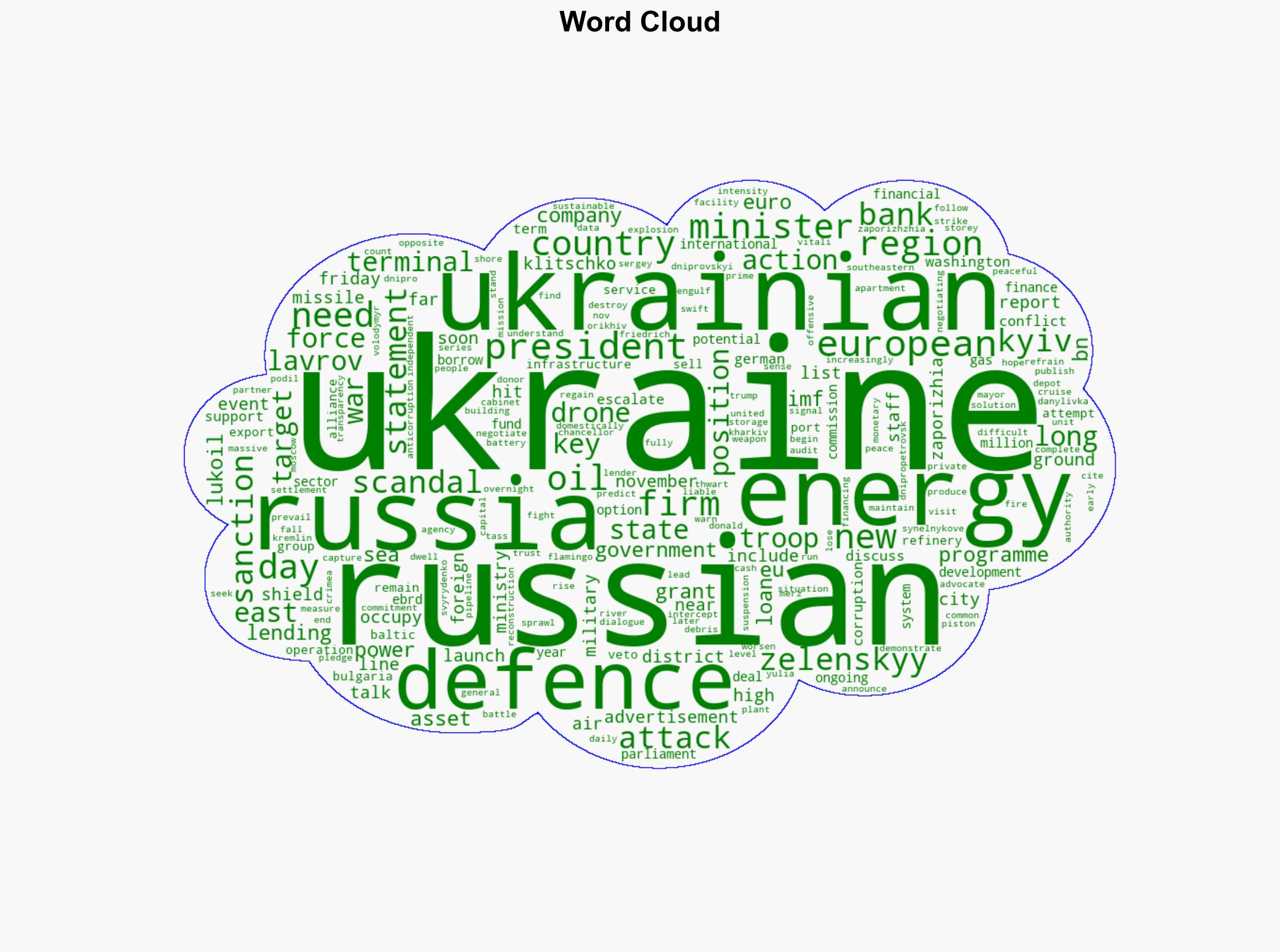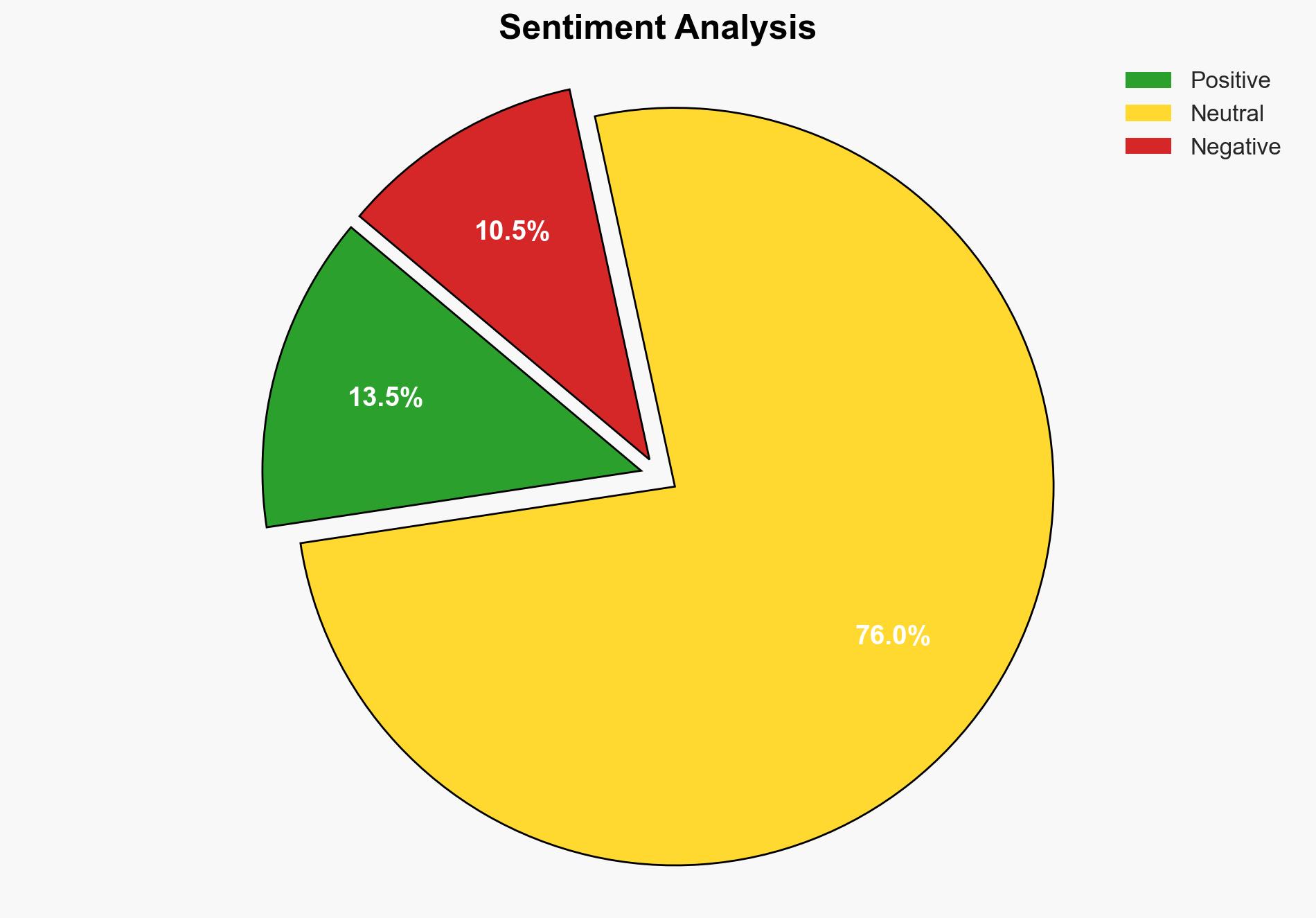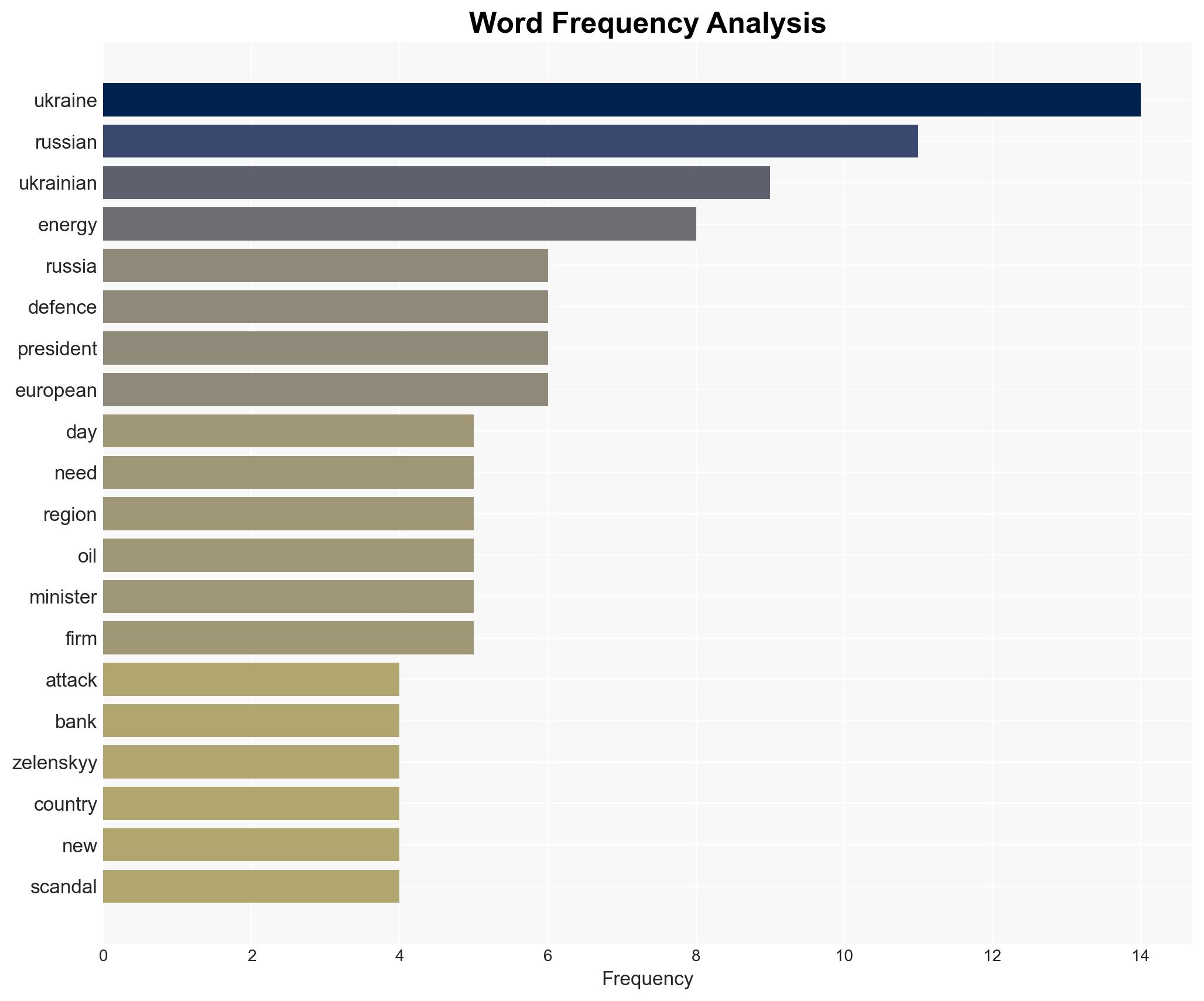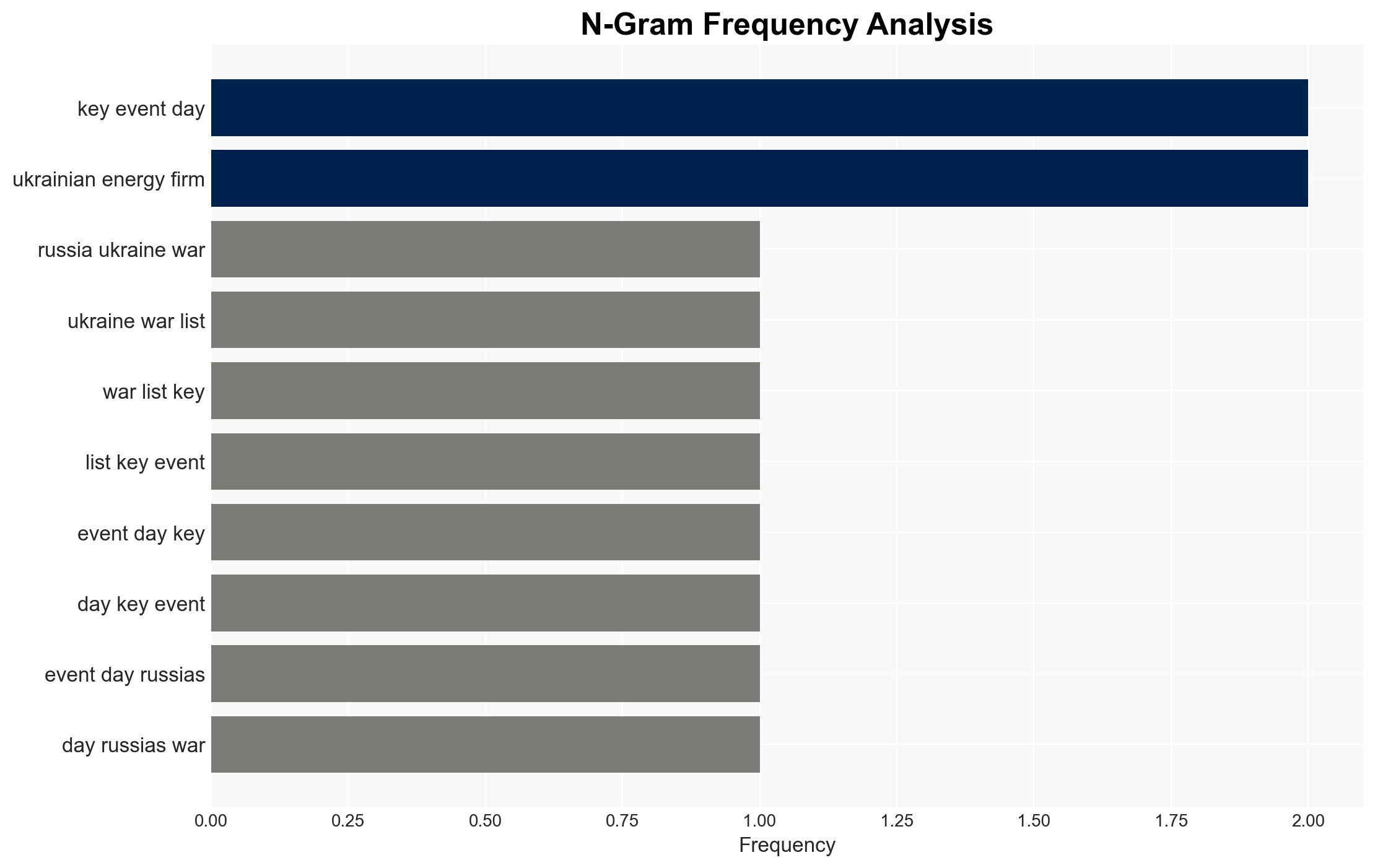Russia-Ukraine war List of key events day 1359 – Al Jazeera English
Published on: 2025-11-14
AI-powered OSINT brief from verified open sources. Automated NLP signal extraction with human verification. See our Methodology and Why WorldWideWatchers.
Intelligence Report: Russia-Ukraine war List of key events day 1359 – Al Jazeera English
1. BLUF (Bottom Line Up Front)
With a moderate confidence level, the most supported hypothesis is that Russia is intensifying its military operations in Ukraine to gain strategic leverage before potential peace talks. Recommended actions include bolstering Ukrainian defenses and diplomatic efforts to maintain international support for Ukraine.
2. Competing Hypotheses
Hypothesis 1: Russia is escalating military operations to gain territorial and strategic advantages before entering peace negotiations. This is supported by the massive attack on Kyiv, the capture of settlements, and the targeting of Ukrainian infrastructure.
Hypothesis 2: Russia’s actions are primarily defensive, aiming to consolidate control over occupied territories and deter Ukrainian advances. Evidence includes the interception of Ukrainian drones and defensive posturing in Crimea and Zaporizhia.
The first hypothesis is more likely due to the scale and intensity of the recent attacks and the strategic importance of the targeted areas.
3. Key Assumptions and Red Flags
Assumptions: It is assumed that Russia’s military objectives are aligned with its political goals of negotiating from a position of strength. Another assumption is that Ukraine will continue to receive international support despite internal challenges.
Red Flags: The mention of peace talks by Russian officials could be a strategic deception to buy time or reduce international pressure. The energy corruption scandal in Ukraine could undermine international confidence and support.
4. Implications and Strategic Risks
The escalation of military operations could lead to increased casualties and further destabilization in the region. There is a risk of broader conflict if Russia’s actions provoke a stronger international military response. Economically, continued conflict could strain Ukraine’s financial resources and international aid commitments.
5. Recommendations and Outlook
- Strengthen Ukrainian air defenses and provide additional military support to counter Russian offensives.
- Enhance diplomatic efforts to maintain and increase international support for Ukraine, emphasizing transparency and anti-corruption measures.
- Best-case scenario: Successful Ukrainian defense leads to a stalemate, encouraging genuine peace negotiations.
- Worst-case scenario: Escalation leads to broader regional conflict involving NATO countries.
- Most-likely scenario: Continued conflict with intermittent negotiations, maintaining the status quo of international support for Ukraine.
6. Key Individuals and Entities
Vitali Klitschko, Volodymyr Zelenskyy, Sergey Lavrov, Friedrich Merz, Yulia Svyrydenko, Ursula von der Leyen.
7. Thematic Tags
Regional Focus: Eastern Europe, Russia, Ukraine
Structured Analytic Techniques Applied
- Causal Layered Analysis (CLA): Analyze events across surface happenings, systems, worldviews, and myths.
- Cross-Impact Simulation: Model ripple effects across neighboring states, conflicts, or economic dependencies.
- Scenario Generation: Explore divergent futures under varying assumptions to identify plausible paths.
- Network Influence Mapping: Map influence relationships to assess actor impact.
Explore more:
Regional Focus Briefs ·
Daily Summary ·
Methodology





